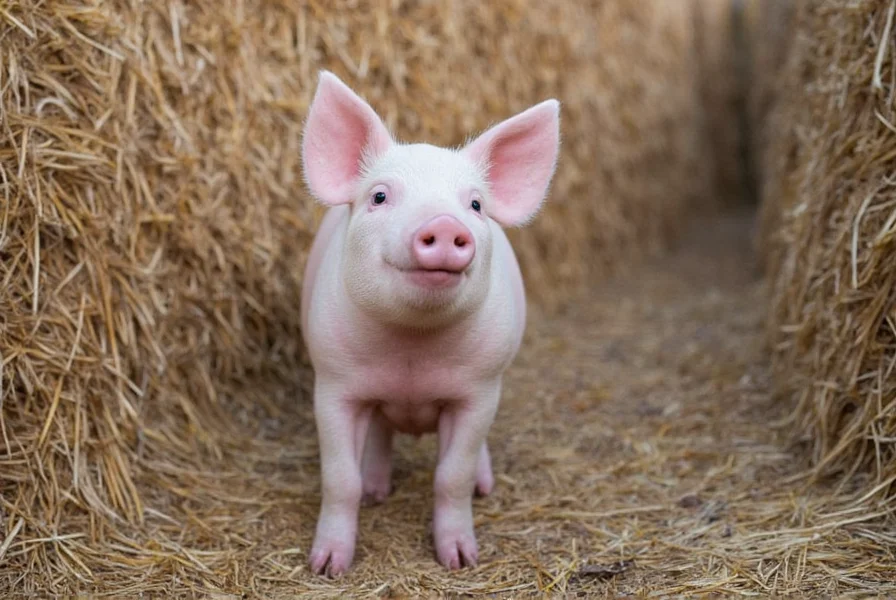For consumers seeking ethically raised pork from heritage breed pigs, The Ginger Piggery represents a model of sustainable agriculture that balances traditional farming wisdom with contemporary animal welfare standards. This specialty pig farm has developed a reputation for producing premium pork while maintaining environmental stewardship—a combination increasingly valued by discerning consumers.
History and Farming Philosophy
Founded by agricultural specialist Thomas Harrington in 2005, The Ginger Piggery began as a small-scale operation focused on preserving rare pig breeds that were disappearing from commercial agriculture. The farm's name derives from its initial focus on the Gloucestershire Old Spot breed, historically known as “the orchard pig” due to its ginger-colored spots.
What distinguishes this sustainable pig farming operation from conventional operations is its holistic approach to animal husbandry. The farm operates on a rotational grazing system across 45 acres of pastureland, allowing pigs to express natural behaviors while improving soil health. This method of heritage pig farming creates a symbiotic relationship between animal welfare and land management that has attracted attention from agricultural researchers.
Specialized Production Methods
The Ginger Piggery focuses exclusively on three heritage breeds: Gloucestershire Old Spots, Tamworths, and British Saddlebacks. Each breed is selected for specific qualities that contribute to exceptional meat characteristics. Unlike industrial pork production facilities, this specialty pig farm maintains a low stocking density, with approximately one pig per acre of rotational pasture.
Visitors interested in sustainable pork production often inquire about the farm's feeding regimen. The pigs receive a carefully balanced diet consisting of:
| Diet Component | Percentage | Source |
|---|---|---|
| Pasture forage | 40% | Rotational grazing fields |
| Local grain byproducts | 30% | Regional mills (non-GMO) |
| Food waste reduction | 20% | Local bakeries and produce markets |
| Supplemental minerals | 10% | Organic-certified sources |
This feeding approach not only reduces environmental impact but also contributes to the distinctive flavor profile that has made The Ginger Piggery's pork products sought after by specialty butchers and restaurants focused on locally sourced ingredients.
Community Impact and Recognition
Over the years, The Ginger Piggery has become an educational resource for sustainable agriculture. The farm hosts regular workshops on heritage breed conservation and ethical meat production, attracting both aspiring farmers and consumers interested in understanding where their food comes from. These educational farm visits have helped bridge the gap between agricultural producers and the public—a growing trend in the sustainable food movement.
Industry recognition for this specialty pork producer includes:
- Certification from the Rare Breeds Survival Trust
- Multiple awards at the annual British Pig Association show
- Inclusion in the Slow Food UK Ark of Taste catalog
- Featured case study in sustainable agriculture textbooks
Practical Information for Visitors and Customers
For those interested in experiencing this model of sustainable pig farming firsthand, The Ginger Piggery offers limited farm tours by appointment. Unlike commercial pig operations that restrict public access, this family farm welcomes visitors who want to see ethical pork production in action. The farm shop operates on weekends, selling directly to consumers—a practice that has become increasingly popular among specialty meat producers.
Customers seeking heritage breed pork products should note that availability follows seasonal patterns aligned with natural breeding cycles, rather than the constant supply typical of industrial pork production. This seasonal approach to pork availability represents a return to traditional farming rhythms that many consumers now appreciate as part of the “farm-to-table” experience.
Understanding Sustainable Pig Farming Practices
The growing interest in operations like The Ginger Piggery reflects a broader shift in consumer awareness about food production systems. When evaluating specialty pork producers, knowledgeable consumers consider several factors that distinguish ethical operations from conventional ones:
- Transparency about farming methods and animal welfare standards
- Commitment to heritage breed preservation
- Integration of farming practices with local ecosystems
- Direct relationships between producers and consumers
- Seasonal production aligned with natural animal cycles
These elements collectively define what many consumers now seek when searching for “sustainable pig farm near me” or “heritage breed pork producer.” The Ginger Piggery exemplifies how traditional farming knowledge, when combined with modern welfare standards, can create a viable business model that satisfies both ethical concerns and culinary expectations.
What makes The Ginger Piggery different from conventional pig farms?
The Ginger Piggery differs through its exclusive focus on heritage pig breeds, rotational grazing system, and commitment to natural farming cycles. Unlike industrial operations, they maintain low stocking densities (one pig per acre), avoid routine antibiotics, and follow seasonal production patterns that align with natural breeding cycles rather than maximizing output year-round.
Can visitors tour The Ginger Piggery farm?
Yes, The Ginger Piggery offers scheduled farm tours that provide insight into sustainable pig farming practices. These educational visits must be arranged in advance through their website, as the farm prioritizes animal welfare and maintains a controlled visitor schedule to minimize stress on the animals.
What heritage pig breeds does The Ginger Piggery raise?
The farm specializes in three heritage breeds: Gloucestershire Old Spots (known for their ginger spots), Tamworths (recognized for exceptional flavor), and British Saddlebacks. Each breed was selected for specific qualities that contribute to superior meat characteristics and adaptability to pasture-based systems.
How does The Ginger Piggery's feeding regimen affect pork quality?
Their pasture-based diet (40% forage, 30% local grains, 20% food waste reduction, and 10% supplements) creates pork with distinctive marbling, richer flavor, and improved nutritional profile compared to conventionally raised pork. The varied diet contributes to the unique taste that has made their products popular with specialty butchers and restaurants.
Is The Ginger Piggery certified organic?
While The Ginger Piggery follows many organic practices, they maintain a non-certified status to preserve flexibility in their farming methods. They exceed many organic standards in animal welfare and land management but choose not to pursue formal certification due to the administrative burden, instead focusing on transparent communication about their specific practices.











 浙公网安备
33010002000092号
浙公网安备
33010002000092号 浙B2-20120091-4
浙B2-20120091-4